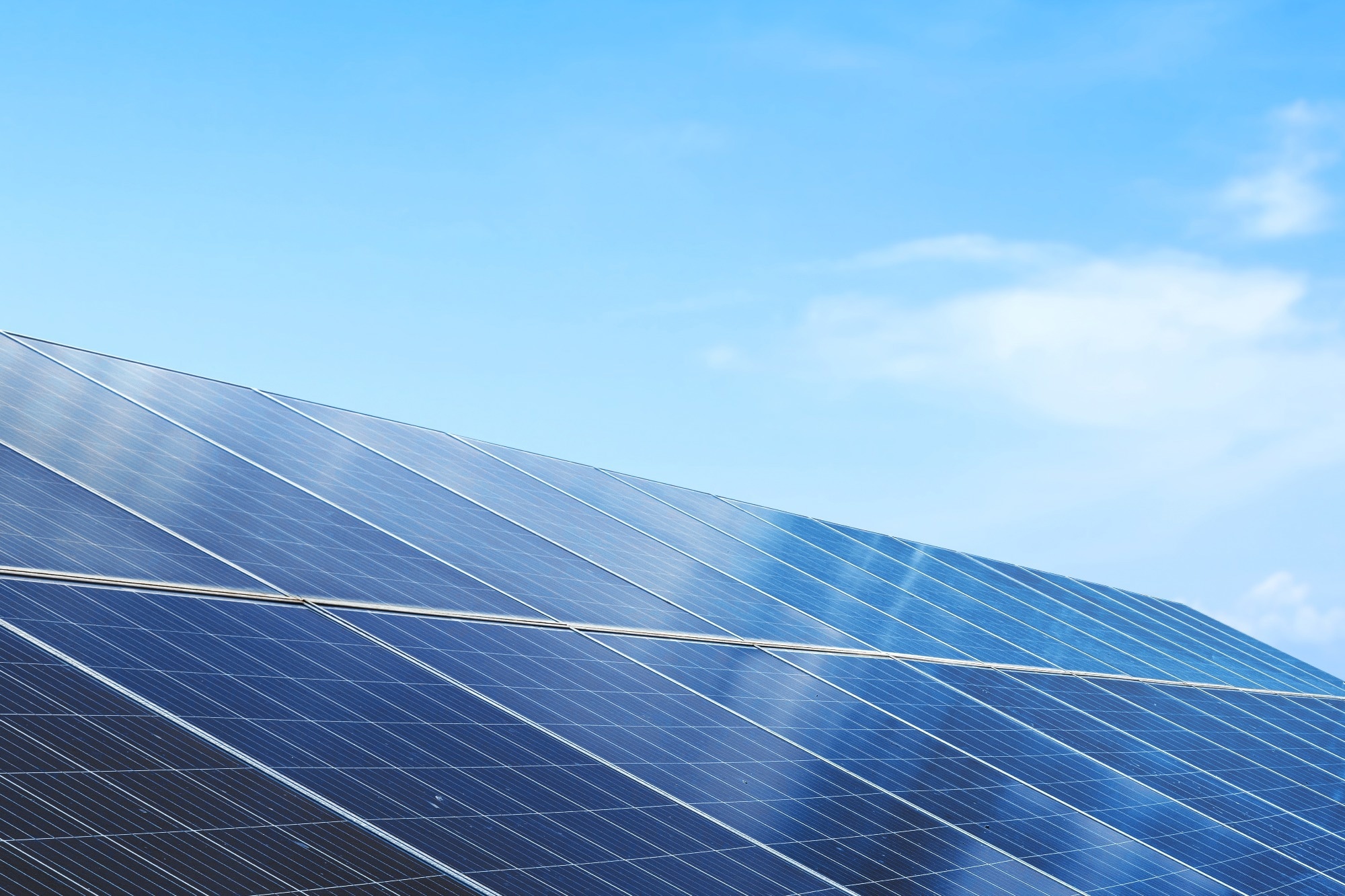In a recent article published in Sustainability, researchers from Pakistan demonstrated that zinc oxide (ZnO), with its high band gap energy and excellent electro-optical properties, can enhance the durability and efficiency of solar panels. By employing a systematic approach to synthesize and characterize ZnO nanocomposites, the research seeks to provide a viable solution for improving solar cell performance.

Image Credit: leolintang/Shutterstock.com
Background
The demand for renewable energy has led to advancements in solar technology, particularly in enhancing solar panel efficiency and longevity. Silicon-based solar cells face UV-induced degradation, reducing their performance.
With its wide band gap of ~3.37 eV, ZnO effectively absorbs UV light and is ideal for protective coatings. This study creates polyvinyl butyral (PVB)/ZnO nanocomposite films by dissolving PVB in toluene and adding ZnO nanoparticles. The solution is applied to PET substrates and solar panels and tested for stability under accelerated aging conditions.
The Current Study
The synthesis of ZnO nanoparticles was done using a solution of zinc acetate, which was stirred for several hours to ensure complete dissolution. Sodium hydroxide is then added, resulting in a precipitation reaction that forms zinc hydroxide. The mixture undergoes hydrolysis and condensation, yielding a gel-like substance that is heated to produce white ZnO nanoparticles. The authors emphasize the importance of controlling the pH and temperature during synthesis to achieve high-quality nanoparticles.
To prepare PVB/ZnO nanocomposite films, the authors dissolve 10 % PVB in toluene, stirring until clear. ZnO nanoparticles are added in varying concentrations of 0.1 %, 0.3 %, and 0.5 % by weight to explore different composite properties. The solution is then sprayed onto PET substrates and solar panels, with the films peeled off for characterization.
X-ray diffraction (XRD) analysis was conducted to determine the crystalline structure of the synthesized ZnO nanoparticles. Scanning electron microscopy (SEM) was employed to investigate the surface morphology and particle size of the ZnO nanoparticles and the distribution of ZnO within the PVB matrix.
Fourier-transform infrared spectroscopy (FTIR) was utilized to analyze the chemical bonding and functional groups present in the PVB/ZnO nanocomposite films, providing insights into the interactions between the PVB matrix and the ZnO nanoparticles.
Ultraviolet-visible (UV-Vis) spectroscopy was performed to evaluate the optical properties of the PVB/ZnO films, particularly their UV absorbance, and transparency in the visible range, which is critical for assessing the films' effectiveness in blocking UV radiation while allowing visible light to pass through.
Contact angle measurements were conducted to assess the wettability of the PVB/ZnO nanocomposite films, providing information on their surface energy and hydrophobicity.
Results and Discussion
XRD analysis confirmed the successful synthesis of ZnO with a hexagonal wurtzite crystal structure, indicating high crystalline purity. SEM images showed the uniform distribution of ZnO nanoparticles within the PVB matrix, which is crucial for achieving optimal performance in solar applications.
UV-Vis spectroscopy results demonstrated that the PVB/ZnO films exhibited substantial absorbance in the UV region, particularly around 380 nm, while maintaining transparency in the visible range. This characteristic is essential for protecting the underlying solar cells from UV degradation without compromising their light-harvesting capabilities.
The performance of the solar cells was evaluated based on key metrics, including open-circuit voltage (V_oc), short-circuit current (J_sc), efficiency (η), and fill factor (FF). The solar panels were coated with varying concentrations of ZnO (0.1 %, 0.3 %, and 0.5 %) in the PVB matrix. The results indicated a clear trend in performance enhancement with increasing ZnO concentration.
The solar panels coated with 0.5 % ZnO exhibited the best performance, showing only a 1 % efficiency loss over the testing period. In contrast, panels with 0.3 % and 0.1 % ZnO concentrations experienced efficiency losses of 3 % and 4 %, respectively. The uncoated PVB panels demonstrated the most significant decline, with a 7 % loss in efficiency.
This trend suggests that the addition of ZnO nanoparticles effectively mitigates the degradation typically associated with prolonged solar exposure, particularly due to UV radiation. The authors report that the addition of ZnO nanoparticles leads to improved short-circuit current (Jsc), open-circuit voltage (Voc), and overall efficiency (η) of the solar cells. The fill factor (FF) also shows favorable variations over time, indicating enhanced stability under accelerated aging conditions.
Conclusion
The integration of ZnO nanoparticles into PVB coatings presents a promising approach to enhancing the performance and longevity of silicon-based solar cells. This study's findings underscore the potential of nanocomposite materials in advancing sustainable energy solutions, highlighting the importance of material innovation in solar technology.
Future research could explore the optimization of ZnO concentrations and the development of other nanocomposite materials to further improve solar cell efficiency and durability.
Journal Reference
Ghaffar A., et al. (2024). Mitigating UV-Induced Degradation in Solar Panels through ZnO Nanocomposite Coatings. Sustainability. DOI: 10.3390/su1615653